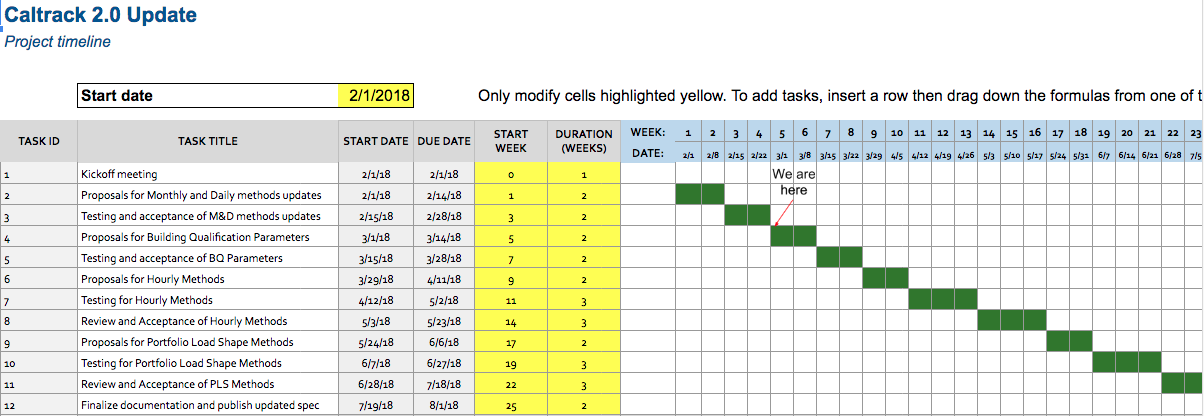|
Week Three CalTRACK Update As week 3 comes to a conclusion, we continue to “Test Monthly and Daily Methods”. Here are a few updates that have occurred this week and some early weather data visualizations. (Click links to GitHub) Methods Updates:
To ensure effective communication, it is important that we are precise with our vocabulary and identification. Please read these updates to ensure that we are consistent in our discussions and documentation.
As we enter week 4 (starting 2/26), we will continue to accept data from testing of “Monthly and Daily Methods”. Starting on Wednesday (2/28), we will begin accepting proposals for “Building Qualification Parameters. We look forward to reviewing your test results on GitHub!
Homework:
1 Comment
|
The purpose of this blog is to provide a high-level overview of CalTrack progress.
For a deeper understanding or to provide input on technical aspects of CalTrack, refer to the GitHub issues page (https://github.com/CalTRACK-2/caltrack/issues). Recordings
2019 CalTRACK Kick Off:
CalTRACK 2.0 July 19, 2018 June 28, 2018 June 7, 2018 May 24, 2018 May 3, 2018 April 12, 2018 March 29, 2018 March 15, 2018 March 1, 2018 February 15, 2018 February 1, 2018 Archives
March 2024
|


 RSS Feed
RSS Feed
